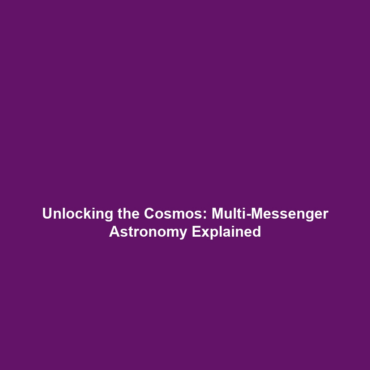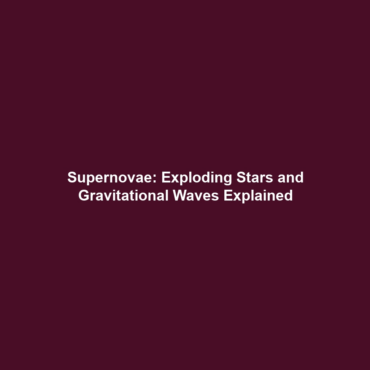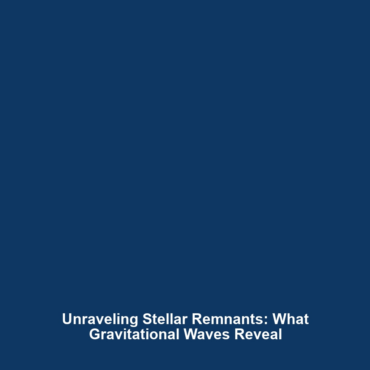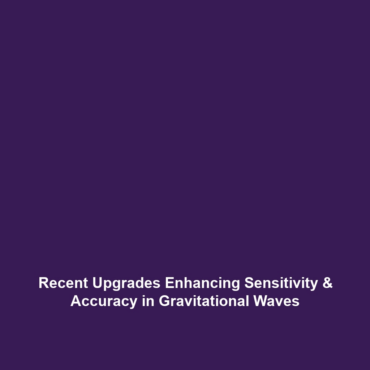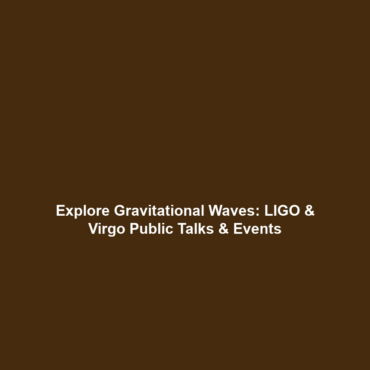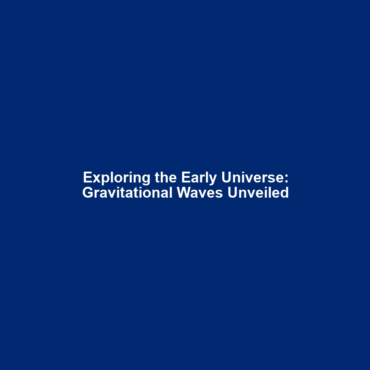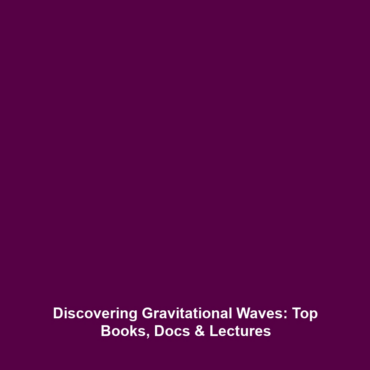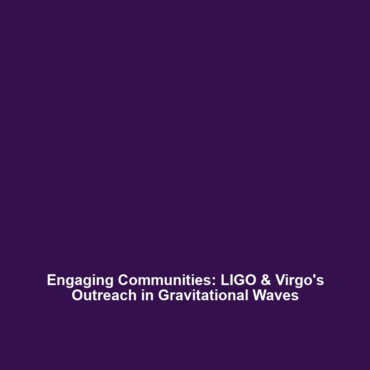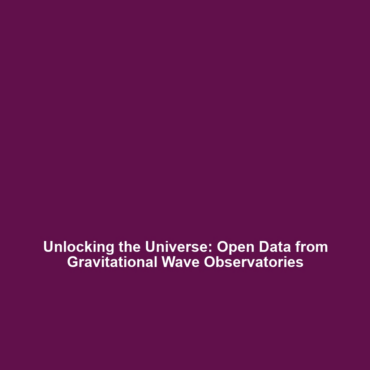Multi-Messenger Astronomy: Integrating Gravitational Waves with Other Observations
Introduction
Multi-messenger astronomy is an innovative approach that revolutionizes our understanding of the universe by combining data from various cosmic signals, such as gravitational waves, light, and neutrinos. This multidisciplinary field significantly enhances our capability to study astrophysical events, providing a comprehensive view of the cosmos. The concept of multi-messenger astronomy is vital in the field of gravitational waves, as it allows researchers to correlate simultaneous events across different spectrums, leading to groundbreaking discoveries and insights.
Key Concepts
The Birth of Multi-Messenger Astronomy
Multi-messenger astronomy integrates multiple sources of information to investigate cosmic phenomena. By correlating signals from gravitational waves with light (electromagnetic radiation) and neutrinos, scientists are better positioned to understand events such as neutron star collisions or black hole mergers. This integration is significant not only in gravitational waves but also provides broader insights into fundamental astrophysical processes.
Importance of Gravitational Waves
Gravitational waves are ripples in spacetime caused by massive accelerating bodies. Their detection allows researchers to observe events that are invisible to traditional telescopes. By coupling these data with information gathered from light and neutrinos, astronomers can develop a holistic picture of cosmic events, drastically enhancing our astrophysical models and interpretations.
Applications and Real-World Uses
The applications of multi-messenger astronomy in gravitational waves are substantial and impactful. Some examples include:
- Enhanced Event Localization: By combining gravitational wave data with electromagnetic signals, astronomers can pinpoint the location of astronomical events, improving follow-up observations.
- Understanding Neutron Star Mergers: Events such as the first detected neutron star merger (GW170817) highlighted the capability of multi-messenger astronomy to yield insights into nuclear processes and kilonovae phenomena.
- Sifting Through Dark Matter: Observing neutrinos in conjunction with gravitational waves has potential implications for investigating dark matter and dark energy compositions in the universe.
Current Challenges
While the promise of multi-messenger astronomy is vast, several challenges of multi-messenger astronomy still persist. These include:
- Integration of Data: Combining data from heterogeneous sources remains complex due to differences in datasets and analytical approaches.
- Technological Limitations: Current detection technologies may not yet be sensitive enough to capture faint signals that characterize distant astronomical phenomena.
- Interdisciplinary Collaboration: There is a need for effective communication and collaboration among diverse astronomy fields to enhance multi-messenger studies.
Future Research and Innovations
The future of multi-messenger astronomy is promising, with upcoming innovations expected to drive significant advancements. These include:
- Next-Generation Detectors: The development of advanced gravitational wave observatories such as Einstein Telescope and Cosmic Explorer is anticipated to improve detection rates and sensitivity.
- Data Analysis Techniques: Machine learning and artificial intelligence are increasingly being applied to manage and analyze the vast amounts of data collected from various cosmic signals.
- International Collaboration: Global collaborations among observatories will enhance the observational capabilities and the richness of collected data.
Conclusion
In summary, the concept of multi-messenger astronomy, which combines gravitational wave data with electromagnetic and neutrino observations, represents a significant leap forward in understanding the universe. By enhancing the connection between various astrophysical phenomena, researchers can gain invaluable insights that were previously unattainable. As we advance in technology and methodologies, the importance of this interdisciplinary approach will continue to grow. For more in-depth information on gravitational waves and advances in astronomy, explore our related articles.
